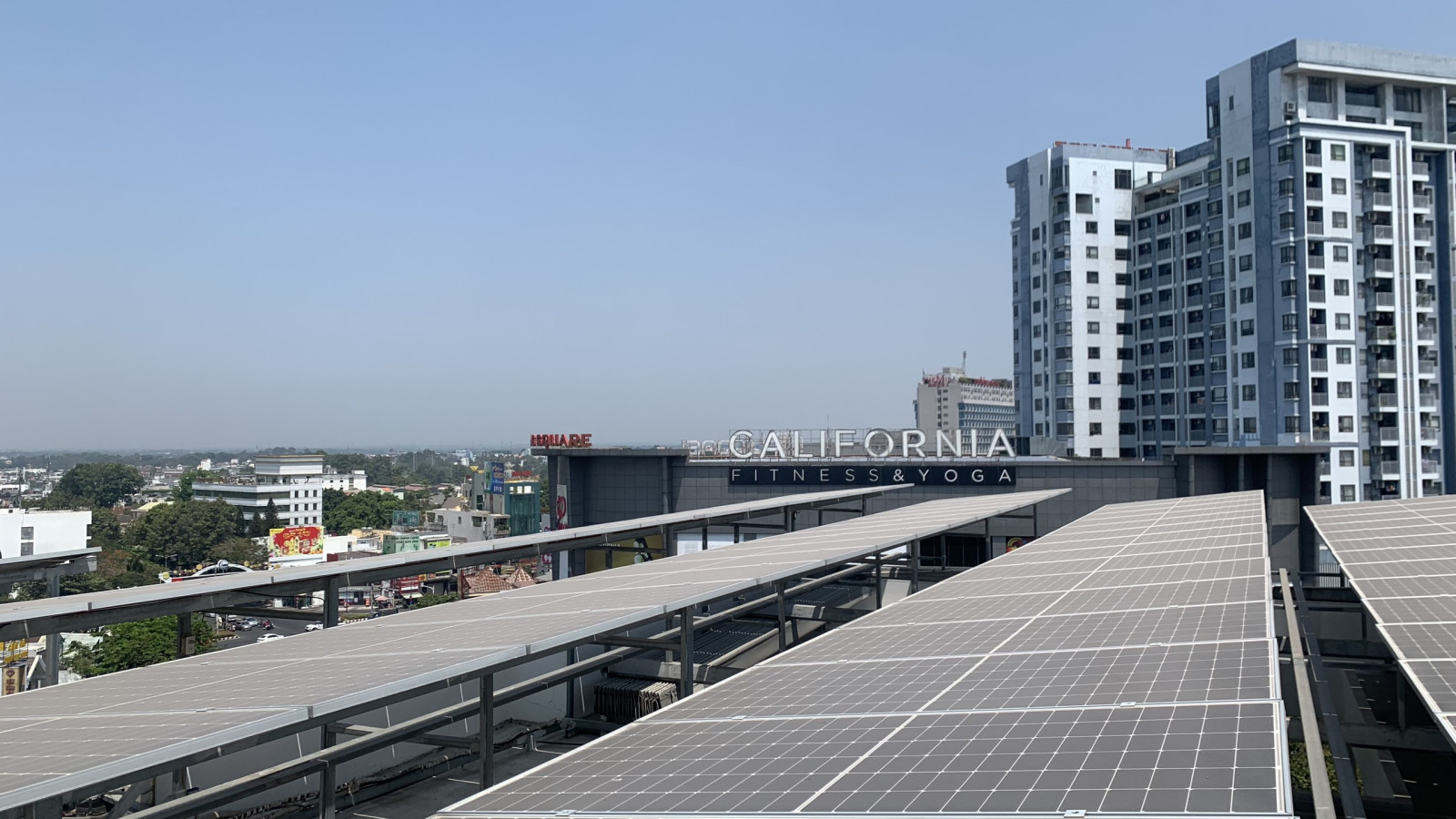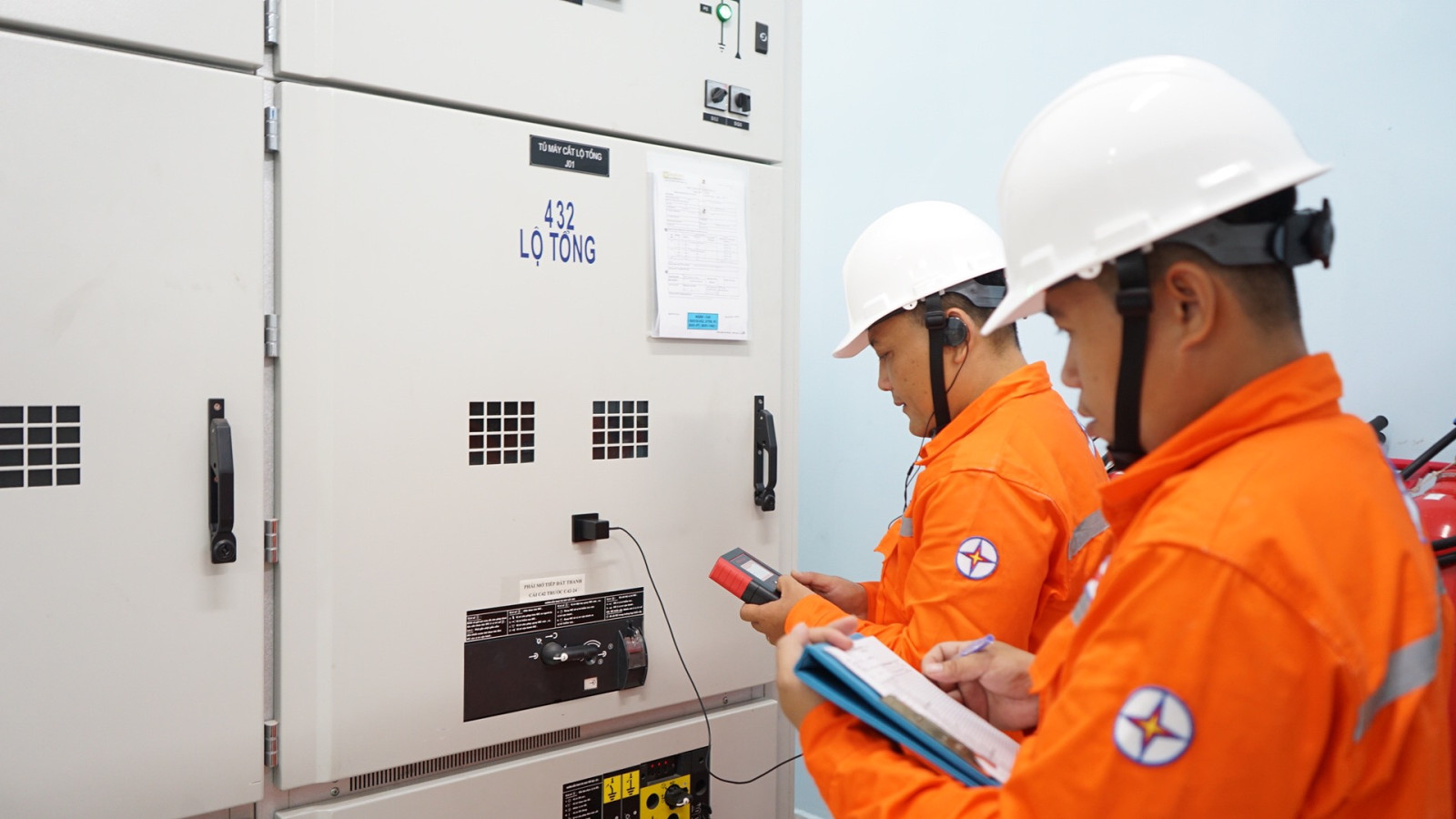Green energy conversion to ensure development according to planning
One of the important goals of Binh Duong province's planning for the 2021-2030 period, with a vision for 2050, is green energy development. The aim is based on science and technology to create an economy in harmony between humans, nature and society. Accordingly, Binh Duong will focus on developing green urban space and green infrastructure, becoming a typical image of Binh Duong city; pay attention to implementing solutions to protect the sustainable ecological environment, develop renewable energy systems, recycle waste, treat wastewater, etc.

The demand for rooftop solar power for daily life and industrial production in Binh Duong will continue to increase in the coming time. In photo: Rooftop solar power project at a household in Thu Dau Mot City.
Improve the quality of existing power sources
To ensure clean electricity and energy sources to serve the province's socio-economic development according to the planning for the 2021-2030 period, with a vision for 2050, Binh Duong province will develop the power grid in line with the provincial socio-economic development orientation, ensuring compliance with the national electricity development planning for the 2021-2030 period, with a vision to 2050 (power planning VIII) approved by the Prime Minister.
Accordingly, Binh Duong continues to build new and upgrade transformer stations and 110kV power lines, medium and low voltage lines connected to new power sources to meet increasing load demand, especially in industrial parks and clusters, and develop new potential energy sources in the province, such as solar power, waste-to-energy, biomass power, etc.
Mr. Nguyen Thanh Toan, Director of the Provincial Department of Industry and Trade, said that Binh Duong plans to gradually underground the power grid in line with other technical infrastructures such as telecommunications, television, water supply and drainage, etc. in stable planning areas. Meanwhile, the province also installed a network of electric charging stations in apartment buildings, public areas, energy infrastructure hubs, etc., to meet energy needs according to the action program on green energy conversion, reducing carbon emissions and methane emissions of the transport sector approved by the Prime Minister.
Particularly for petroleum and gas energy sources, Binh Duong will develop a complete, safe and continuous infrastructure system for supplying and storing petroleum and gas for socio-economic development, ensuring national defense and security of the province, with a total petroleum storage capacity of about 110,100m3, and LPG storage capacity of 6,000 - 7,000m3. Binh Duong also developed a fuel supply system by switching to clean fuels, such as charging stations for electric vehicles, using biofuels and hydrogen to meet the goal committed by Vietnam to reduce net carbon emissions to "0" by 2050.
Invest in new energy sources
In the coming time, 500kV, 220kV, 110kV transformer stations in the province will have their generating capacity upgraded, such as the 500kV Tan Dinh and Tan Uyen stations with the current generating capacity of 1,800MVA will be increased to 2,700MVA by 2030. In addition, Binh Duong will build two new 500KV stations, Binh Duong 1 and Binh Duong 2, with a capacity of 1,800MVA in 2030 and 2,700MVA after 2030. By 2030, the electricity industry will invest in 7 220kV stations with a capacity of 6,250MVA, and after 2030, invest in 3 more 220kV stations with a capacity of 750MVA. For 110kV stations, in addition to 41 existing stations that are mostly at full load, the electricity industry will invest in building 109 new 110kV stations.

Workers of Binh Duong Power Company check the heat source from electrical equipment at the 110kV Go Dau transformer station.
For solar power, by 2030 the demand in industrial parks in the province will be 1,497MW, by 2050 it will be 5,359MW; by 2030 the demand outside industrial parks will be 1,781MW. Particularly, biomass electricity from waste at the South Binh Duong solid waste treatment complex with a generating capacity of 9.6 MW will be upgraded and additionally built after 2030.
Binh Duong also plans for the Biwase waste-to-energy plant with a capacity of 30.4 MW; the waste-to-energy plant at Tan Long waste treatment area, Phu Giao district, is designed to have a capacity of 30 MW by 2030, then increased to 40 MW; the waste-to-energy plant at Binh My waste treatment area, Bac Tan Uyen district will have a capacity of 10 MW, after 2030 it will be 20 MW.
|
To achieve the goal of developing clean energy sources and renewable energy to be of service to the production process according to the global trend, as well as to meet the needs of investors, Binh Duong has proposed the Prime Minister and the Ministry of Industry and Trade to add the province's biomass and waste-to-energy power sources to the VIII power plan, with a capacity of 80MW, in line with the province's development progress in the planning period 2021-2030, with a vision for 2050. |
Reported by Minh Duy - Translated by Ngoc Huynh

